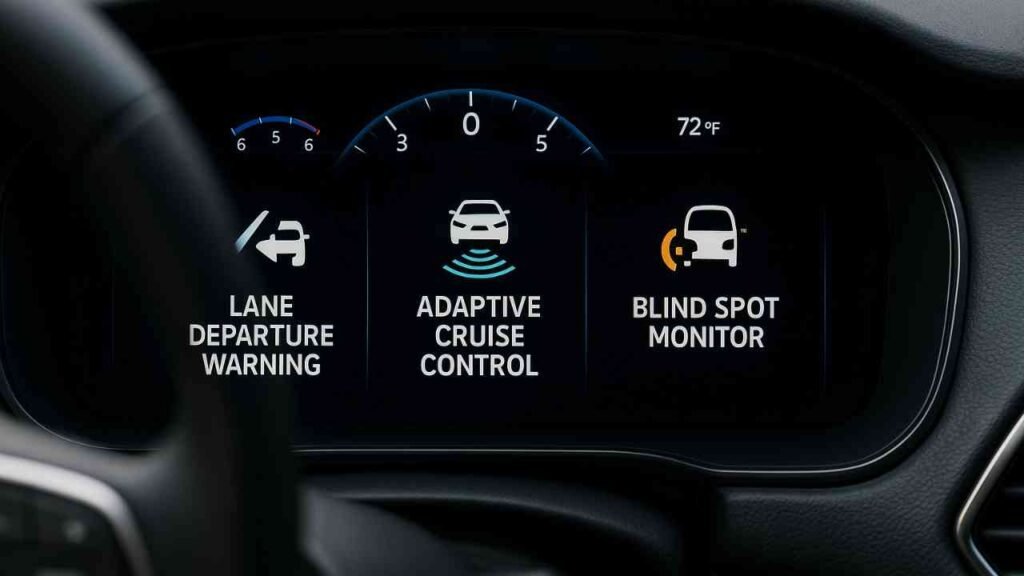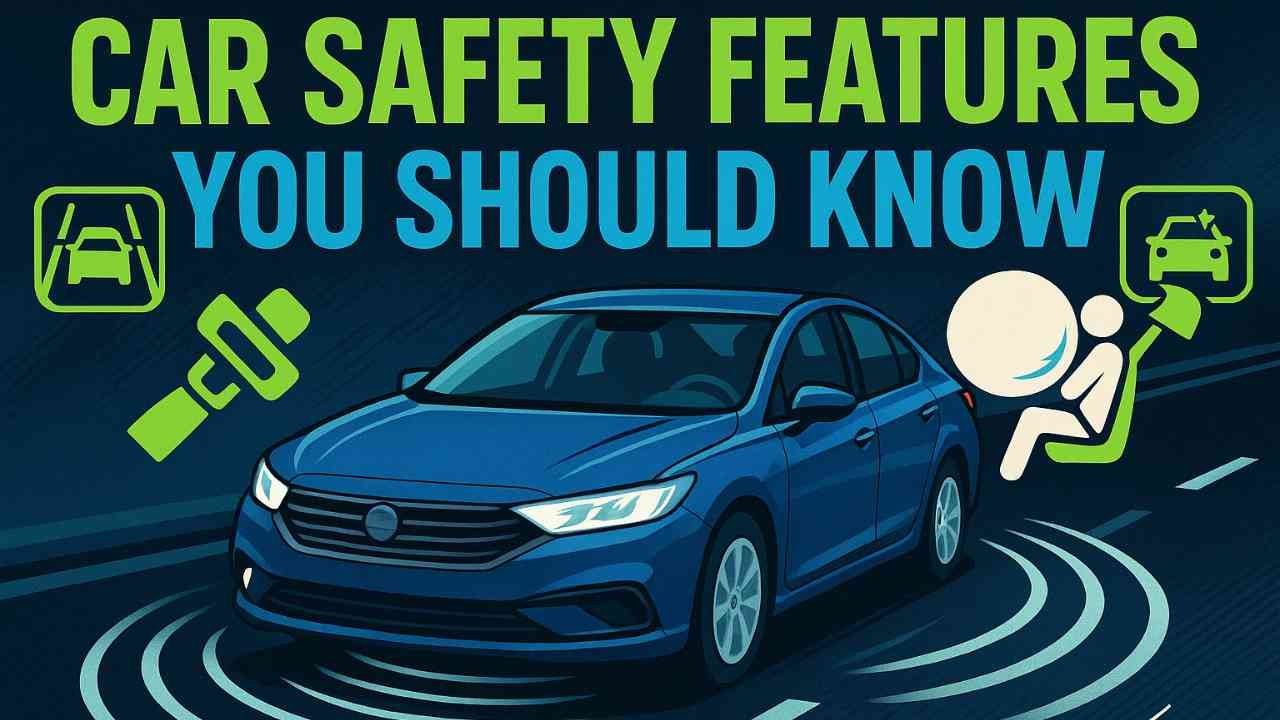Introduction
Car safety is a top priority for every driver, and today’s vehicles are equipped with advanced safety features designed to protect passengers, reduce accidents, and improve overall driving conditions. In this article, we’ll explore the most important car safety features you should know, how they work, and how they contribute to making your driving experience safer.
Anti-lock Braking System (ABS)

Why It’s Important:
The Anti-lock Braking System (ABS) is a critical safety feature that prevents the wheels from locking up during hard braking. This allows the driver to maintain steering control during an emergency stop, reducing the risk of skidding.
- How It Works: ABS automatically modulates brake pressure during an emergency stop to prevent wheel lock-up.
- Benefits: Improved control during braking, especially on slippery or wet roads.
Adaptive Cruise Control (ACC)
Why It’s Important:
Adaptive Cruise Control (ACC) is a smart version of traditional cruise control. It automatically adjusts the car’s speed to maintain a safe distance from the vehicle ahead, making long-distance driving more comfortable and reducing the likelihood of rear-end collisions.
- How It Works: ACC uses radar or cameras to detect the distance between your car and the vehicle in front, adjusting speed accordingly.
- Benefits: Reduces driver fatigue, enhances safety on highways, and helps maintain consistent speed.
Lane Departure Warning (LDW)
Why It’s Important:
Lane Departure Warning (LDW) helps prevent accidents caused by unintended lane drifting. It alerts the driver if the vehicle begins to drift out of its lane without signaling, ensuring better lane discipline.
- How It Works: LDW uses cameras or sensors to monitor lane markings and alerts the driver when the vehicle crosses over without signaling.
- Benefits: Provides an audible or visual warning to prevent unintentional lane changes, especially on highways.
Blind Spot Monitoring (BSM)
Why It’s Important:
Blind Spot Monitoring (BSM) helps prevent accidents when changing lanes or merging. It detects vehicles in the driver’s blind spots and warns the driver before making a lane change.
- How It Works: BSM uses sensors to monitor areas beside and behind the vehicle, alerting the driver when there’s a vehicle in the blind spot.
- Benefits: Reduces the risk of side collisions, especially during lane changes.
Automatic Emergency Braking (AEB)
Why It’s Important:
Automatic Emergency Braking (AEB) is a life-saving feature that detects an impending collision and automatically applies the brakes if the driver doesn’t respond in time. This can help avoid or mitigate accidents, especially in heavy traffic or in situations where the driver is distracted.
- How It Works: AEB uses radar, cameras, and sensors to detect obstacles and other vehicles in the car’s path, activating the brakes when necessary.
- Benefits: Reduces the severity of accidents or prevents them altogether, especially at low speeds.
Rear Cross-Traffic Alert (RCTA)
Why It’s Important:
Rear Cross-Traffic Alert (RCTA) helps drivers avoid accidents when reversing out of parking spaces. It alerts the driver if there is cross-traffic approaching from the left or right, making backing out safer.
- How It Works: RCTA uses sensors to detect moving vehicles in the area behind the car and provides an audible or visual warning if there is an obstacle.
- Benefits: Prevents collisions when reversing, especially in crowded parking lots.
Traction Control System (TCS)
Why It’s Important:
The Traction Control System (TCS) helps prevent wheel spin and loss of control when accelerating, particularly in slippery conditions such as snow, rain, or ice. TCS ensures that the car maintains grip on the road, improving stability.
- How It Works: TCS uses sensors to monitor wheel spin and adjusts engine power or applies the brakes to the spinning wheel to restore traction.
- Benefits: Enhances stability, especially in adverse weather conditions.
Side-Impact Airbags
Why It’s Important:
Side-impact airbags provide additional protection in the event of a side collision, reducing the risk of injury to the occupants. They deploy between the door and the occupant to cushion the impact.
- How It Works: When a side collision is detected, the airbags inflate rapidly between the occupant and the door.
- Benefits: Protects against injury in side-impact accidents by reducing the force of the impact.
Forward Collision Warning (FCW)
Why It’s Important:
Forward Collision Warning (FCW) uses radar or cameras to detect vehicles ahead and warns the driver if a collision is imminent. It is often combined with AEB for automatic braking in case of a potential crash.
- How It Works: FCW monitors the road ahead, and if a vehicle or obstacle is detected too close, the system provides an alert to the driver.
- Benefits: Provides early warning to the driver to react to a potential crash, reducing rear-end collisions.
Pedestrian Detection System
Why It’s Important:
Pedestrian Detection Systems help prevent accidents involving pedestrians. They detect people crossing the road and alert the driver or automatically apply the brakes if the driver doesn’t respond in time.
- How It Works: The system uses cameras, radar, and sensors to detect pedestrians and evaluate the risk of collision.
- Benefits: Reduces the risk of pedestrian-related accidents, especially in busy urban areas.
Conclusion
Modern cars come equipped with a wide array of safety features that make driving safer, more comfortable, and more efficient. By understanding these essential car safety features, you can make an informed decision about which technologies to prioritize when buying your next vehicle. These innovations are helping to reduce accidents, prevent injuries, and protect drivers, passengers, and pedestrians on the road.
